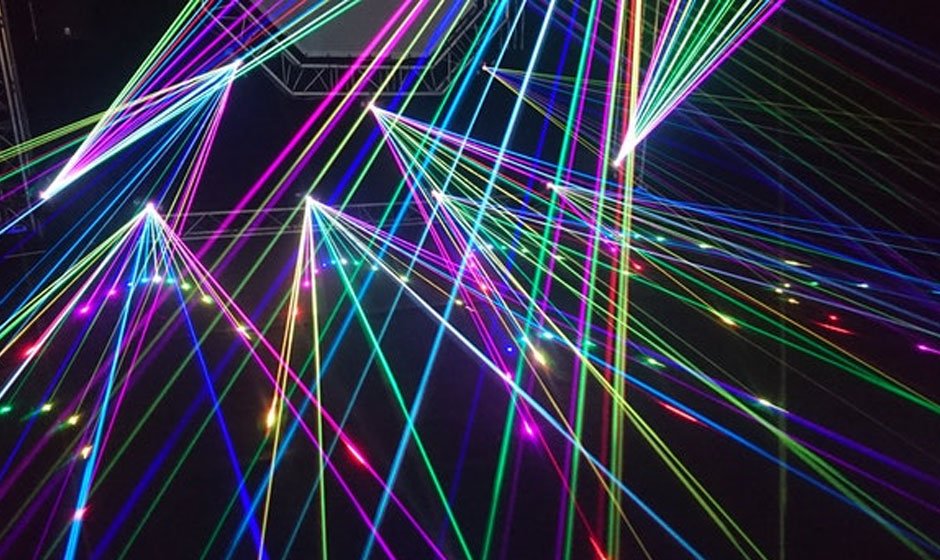Creating a captivating light show that syncs with music can be an exciting and visually stunning experience. Whether you’re planning a small home setup or a large-scale professional production, here’s a comprehensive guide on how to make a light show for music.
How to make a light show for music:
1. Define Your Objectives
Before you begin, determine the purpose and scale of your light show. Is it for a home party, a DJ gig, a concert, or a nightclub? Knowing your goals will help you choose the right equipment and design.
2. Choose your Equipment
Selecting the right lighting equipment is crucial. Consider the following:
- Strobe Lights:These emit bright, rapid flashes of light, perfect for high-energy moments in music.
- LED Par Cans:These versatile lights come in various colors and can create static or dynamic effects.
- Moving Head Lights:These lights pan and tilt to provide dynamic, sweeping beams and patterns.
- Lasers:Lasers can add intricate patterns and beams, but use them responsibly to avoid eye damage.
- Fog or Haze Machines:These enhance the visibility and impact of your lighting effects.
3. Setting the Mood
In event planning, it’s elemental to envision the desired mood and ambiance. Align your color palette and lighting choices with the emotional tone of the music to craft a seamless and captivating experience for your guests. These meticulous details will elevate the overall atmosphere and leave a lasting impression on everyone in attendance.
4. Safety First
When incorporating special effects like lasers and fog or haze machines into your event, always prioritize the safety of both your audience and yourself. Avoid using lasers that can potentially harm eyesight and use fog or haze machines responsibly to forestall any breathing issues. A safe event is a successful one.
5. Perform and Interact
During your live show, stay flexible and ready to adjust lighting cues on the fly to rank with the audience’s energy and response. Interact with the crowd through your lighting effects, creating a dynamic and engaging experience that resonates with your audience’s mood and enthusiasm.
How do captivating light show works
A captivating light show is designed to engage and entertain an audience by synchronizing lighting effects with music, creating a visually stunning and immersive experience. Here’s how a captivating light show typically works:
1. Selecting Lighting Equipment:
To begin, it’s crucial to pick the right lighting equipment that suits the purpose and scale of your show. This may involve choosing from an array of fixtures like LED par cans, moving head lights, strobe lights, lasers, and more. When making your selection, take into account essential factors such as color capabilities, movement capabilities, beam angles, and the availability of special effects. This thoughtful equipment choice sets the foundation for a visually stunning and impactful performance.
2. Control System Setup:
Managing your lighting requires a control system, which can be hardware-based (e.g., a DMX controller) or software-based (utilizing lighting control software). The DMX (Digital Multiplex) protocol is a prevalent choice for controlling lighting fixtures, offering precise control over factors such as color, intensity, movement, and effects for each fixture. The proper control system setup is essential to assure your lighting operates seamlessly and according to your performance requirements.
3. Programming and Sequencing:
Lighting professionals, including designers and operators, craft meticulously timed lighting sequences that sync with the music. This process entails programming cues, scenes, and effects within the control system. Precise timing is paramount in programming to ensure that lighting changes align seamlessly with specific beats, lyrics, or musical cues, enhancing the overall impact of the performance.
How to find a reliable app for light show
Finding a reliable app for creating and controlling a light show can be elemental, whether you’re a professional lighting designer or a hobbyist looking to add some visual flair to your events or performances. Here are some steps to aid you find a trustworthy and capable app for your light show needs:
1. Determine Your Requirements:
Prior to embarking on your search for a lighting control app, it’s essential to define your specific needs. Take into account factors like the type of lighting equipment you’ll utilize, the complexity of your light show, and your level of expertise. This clarity will guide you towards finding the most suitable app to meet your lighting control needs.
2. Read Reviews and Ratings:
Check app stores, online forums, and review websites for user feedback and ratings on lighting control apps. Apps with positive reviews and high ratings are often a good indication of reliability and user satisfaction. For example, learn more about ScottEffx by visiting their website.
3. Research Lighting Equipment Compatibility:
Ensure that the app you’re considering is compatible with your lighting fixtures and equipment. Look for information on the app’s website or in user reviews regarding compatibility with DMX-controlled lighting or specific hardware brands.
4. Trial Versions and Demos:
Many lighting control apps offer trial versions or demos that allow you to test the app’s functionality before making a purchase. Take advantage of these options to see if the app meets your needs.

